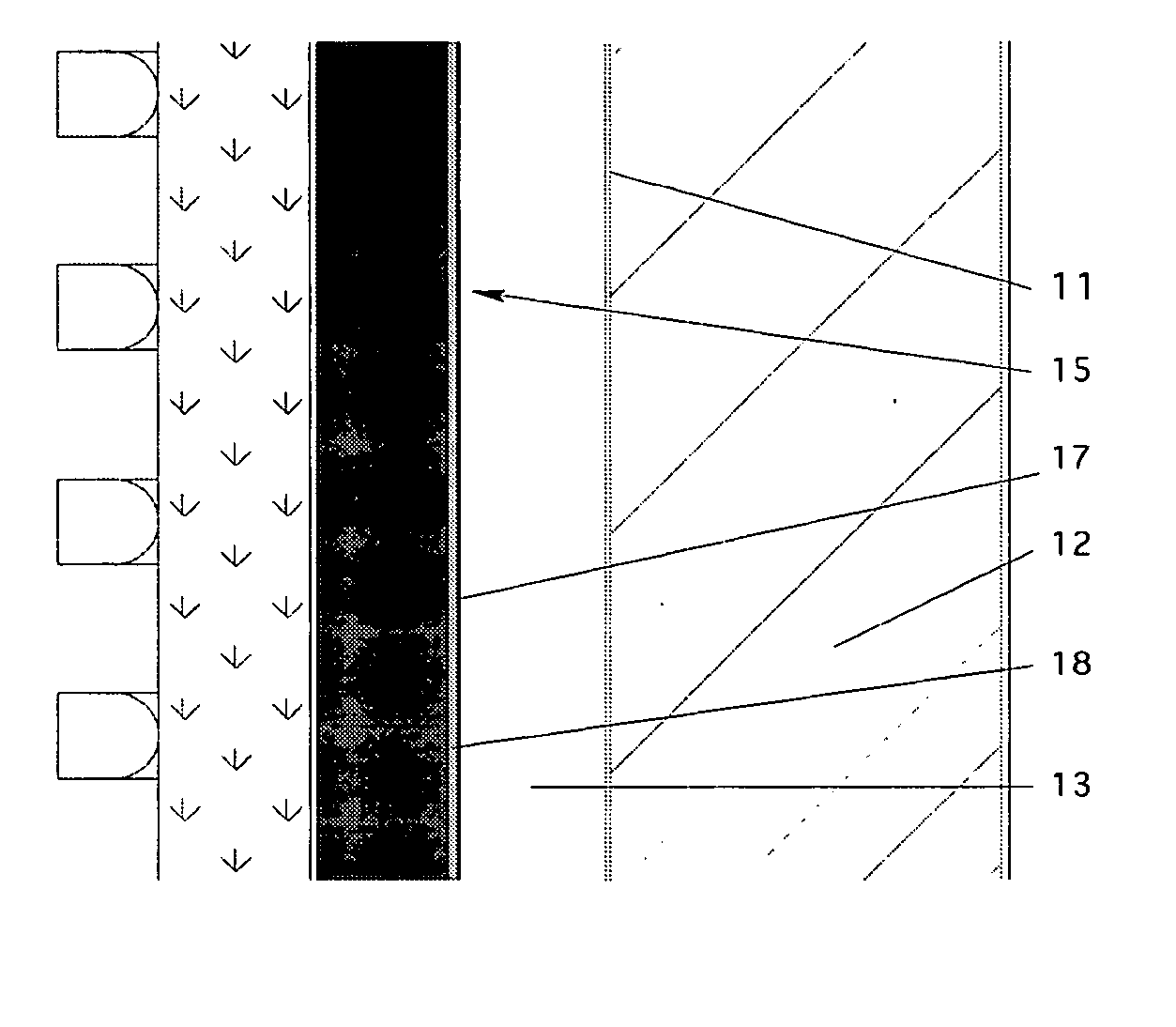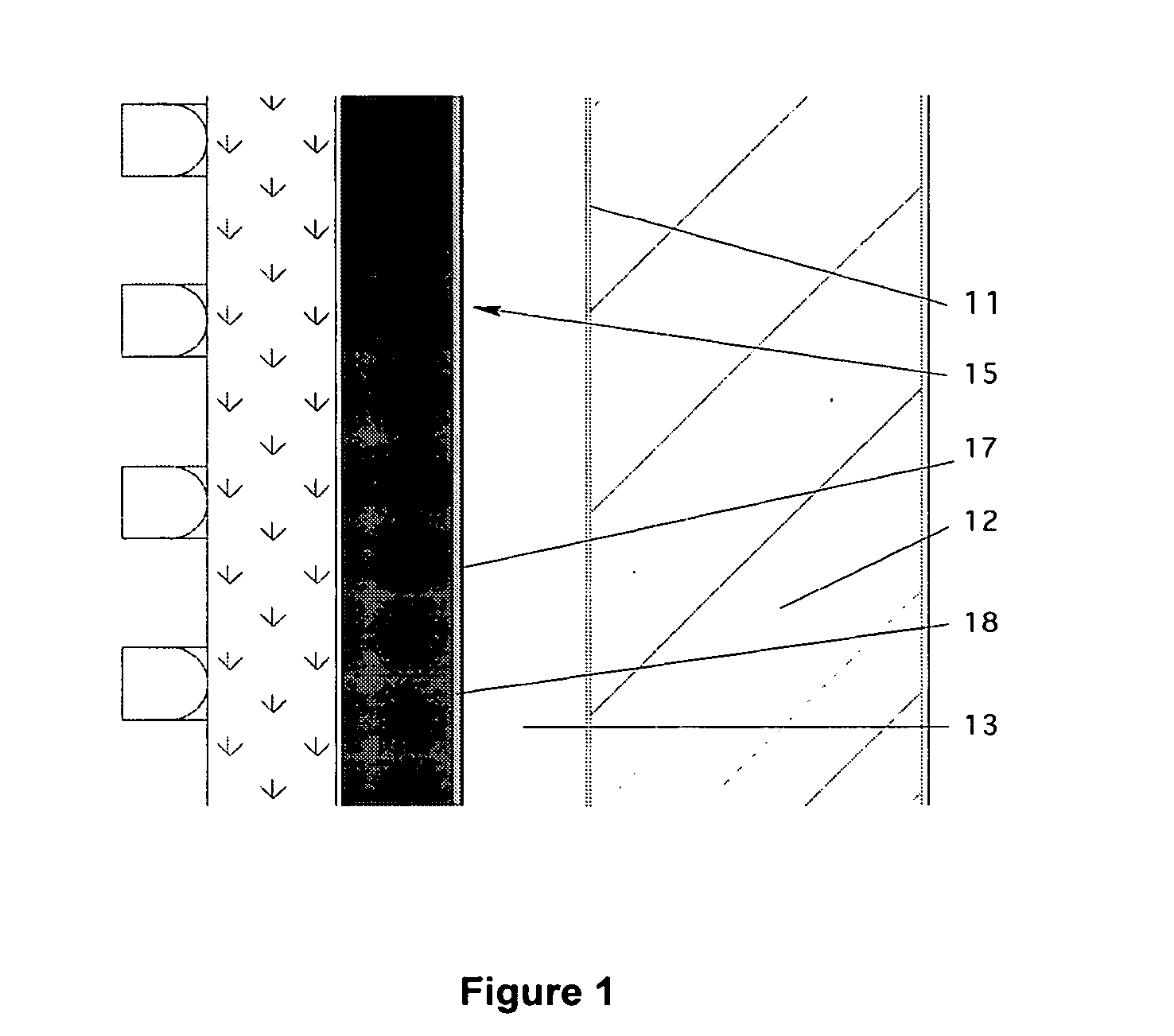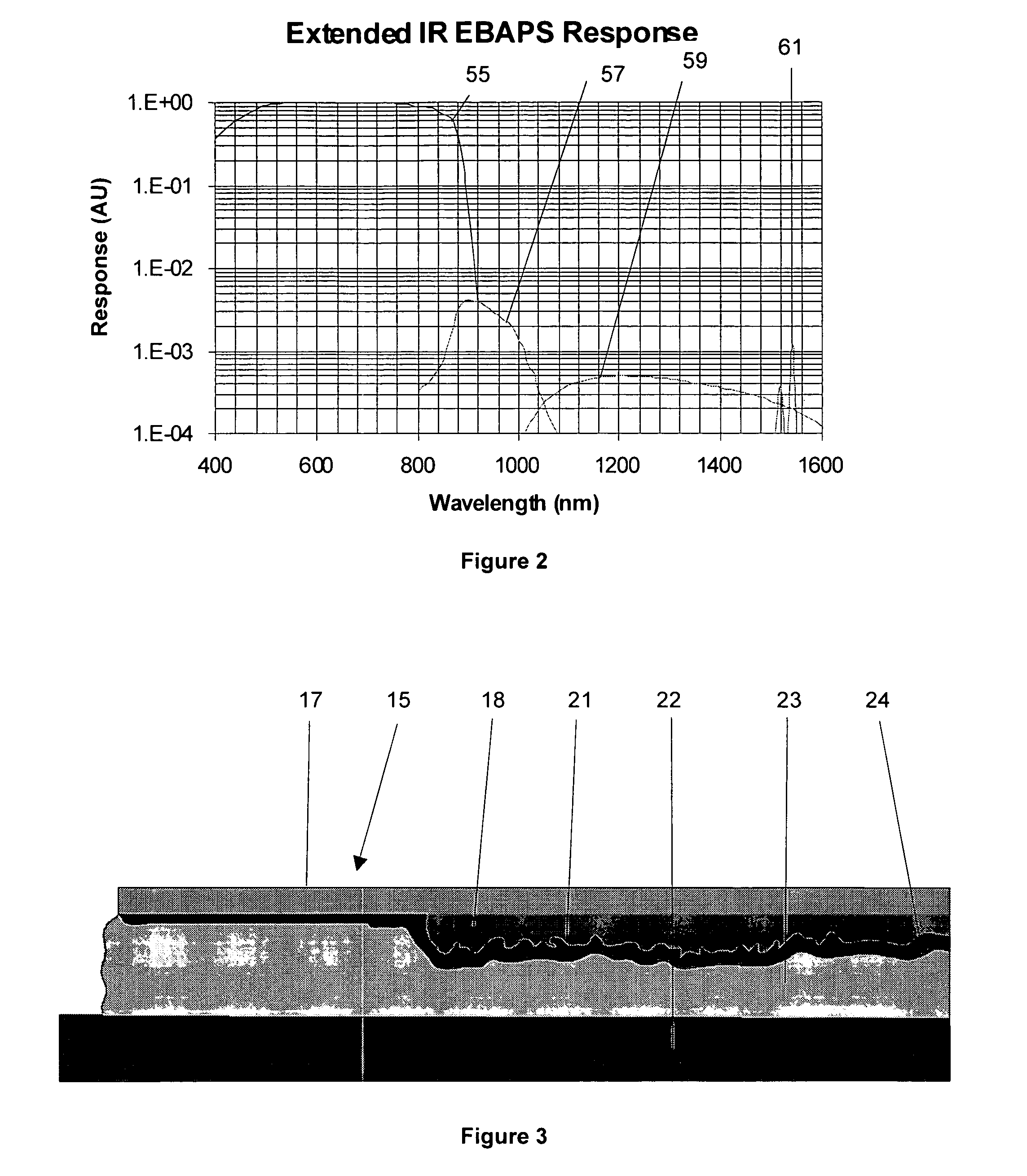Wavelength extension for backthinned silicon image arrays
- Summary
- Abstract
- Description
- Claims
- Application Information
AI Technical Summary
Benefits of technology
Problems solved by technology
Method used
Image
Examples
Embodiment Construction
[0016] Referring now to FIG. 1, there is illustrated a CMOS sensor in accordance with this invention in position in a structure in which the back-thinned CMOS is exposed to electron bombardment. In this FIG. 11 represents a photocathode which in the preferred embodiment is a GaAs layer positioned on sensor window 12 which may comprise a transparent glass layer. Sensor window 12 represents the outer wall of the device illustrated. A vacuum separation 13 is between photocathode 11 and back-thinned surface 17 of silicon material of the CMOS imager 15. The back-thinned surface 17 comprises one of the outer surfaces of the CMOS sensor 15. Positioned between or under the back-thinned silicon layer 17 of sensor 15 and the remainder of the supporting assembly of sensor 15 is an up-conversion material or layer 18.
[0017] One specific goal of the detector is to be able to allow the detection of aiming lights. Aiming lights that fall between 1100 and 2000 nm would normally be invisible to both...
PUM
 Login to View More
Login to View More Abstract
Description
Claims
Application Information
 Login to View More
Login to View More - R&D
- Intellectual Property
- Life Sciences
- Materials
- Tech Scout
- Unparalleled Data Quality
- Higher Quality Content
- 60% Fewer Hallucinations
Browse by: Latest US Patents, China's latest patents, Technical Efficacy Thesaurus, Application Domain, Technology Topic, Popular Technical Reports.
© 2025 PatSnap. All rights reserved.Legal|Privacy policy|Modern Slavery Act Transparency Statement|Sitemap|About US| Contact US: help@patsnap.com



